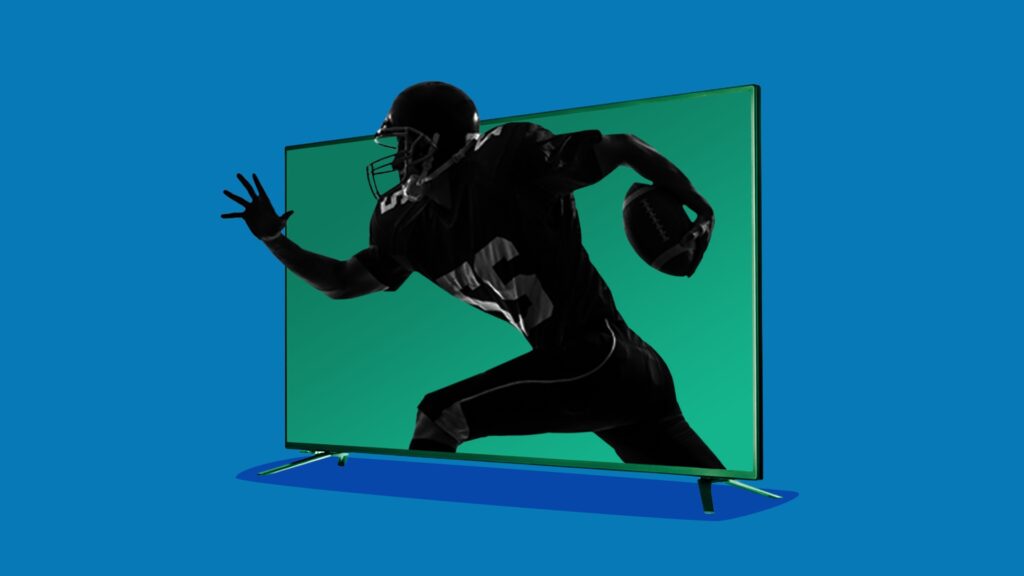Local TV Advertising Costs: 10 Factors to Consider
by Frankie Karrer
1 Min Read
As linear and streaming continue to negotiate, performance marketers remain above the fray

4 Min Read
The dreaded cable blackout strikes again! The start of what was set to be one of the biggest sports seasons of the year was spoiled for some by another dispute between a cable provider and a content behemoth. But while this roadblock caused viewers to scramble to support their favorite teams, performance marketers rested easy — their ad strategies were already in the red zone.
The first weekend of September promised to be a good one for sports fans. The US Open was well underway, and football fans were geared up for the upcoming season. However, not everyone was in a teamwork-focused mindset. Spectrum viewers (Charter’s cable offering) logged in to find that ESPN and ABC were blacked out due to a dispute with parent company Disney. Heading into the first week of the NFL season, some 15 million were left high and dry, without access to Disney’s slate of channels.
The disagreement came down to content — and the high price for it. Charter’s qualm with the current arrangement is that while they pay steep prices for access to Disney’s family of channels (to the tune of $2.2 billion this year alone) much of Disney’s premium content offering was only available exclusively through their streaming app, Disney+. For such a hefty price tag, Charter reasoned, their customers should receive access to Disney’s streaming services, too, though they said they’d settle for an agreement that would unbundle expensive channels such as ESPN. Disney sees it another way: they are paying large sums that don’t come from their Charter deal to fund that exclusive content — why should Charter get to benefit?
“Our linear channels and direct-to-consumer services are not one and the same, per Charter’s assertions, but rather complementary products,” Disney said in a statement. “We continue to invest in original content that premieres exclusively on our linear networks, including live sports, news, and appointment-viewing programming. Likewise, on our direct-to-consumer services, we make multi-billion-dollar investments in exclusive content, which is incremental to our linear networks.”
While Disney’s slate of channels was dark, both Disney and Charter pushed to their streaming services instead. Disney encouraged sports fans to sign up for their Hulu + Live Sports offering, while Charter offered a discount on their Fubo streaming service. Here is another instance of cable unable to fulfill viewer needs — and streaming swooping in to provide. For some subscribers, this was the final straw, and they canceled their Spectrum cable before tuning into the game on their streaming channel of choice.
This conflict has highlighted an underexplored dynamic in the ever-evolving relationship between cable and streaming. Streaming has been steadily siphoning off viewers and time spent from their linear counterparts. However, as The Wall Street Journal highlights, they’re still not profitable on their own. These cable companies are an essential part of the profits fueling the streaming companies that are challenging their very existence. “Taking our money and weaponizing it against us is a problem,” said Rob Thun, chief content officer at DirecTV, another player in the pay-TV space.
After 10 days, just hours before the first Monday Night Football game of the season, Disney and Charter reached a deal. Disney+’s basic tier will now be included for Spectrum Select TV viewers, while ESPN+ will be available to a new sports-focused Spectrum package. Other Disney channels, such as Freeform and FXX, will not be returning to Spectrum packages. While the two parties have reached a tenuous agreement, the future still looks uncertain for streaming giants and the cable providers they’re simultaneously relying on and overtaking.
So what does this mean for advertisers in these spaces? Despite these seismic rumblings in the TV space, performance marketers can rest easy. While streaming may be the center of attention in these cable conflicts, the results it consistently delivers for advertisers remain an oasis away from the chaos. Not only do streaming hours continue to grow, but disputes like these end up pushing more people to streaming, increasing the reach of advertisers’ streaming strategies.
Performance marketers who have opted into using CTV not only capture that growing audience but more importantly have access to unmatched tools to meet their performance needs. From sophisticated audience targeting, to affordable inventory and real-time measurement, CTV offers a break from the noise of the headlines — it focuses on results.
While headlines often speak of the imminent demise of the cable industry, it’s not going away just yet, and neither are these disputes. Those with a solid performance strategy can sit on the sidelines and reap the rewards of their stable and secure CTV.